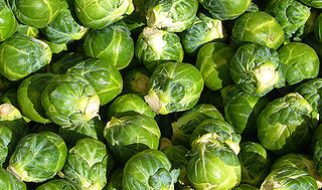Contact Dr. Lu for information about cancer treatments。聯繫盧博士,獲取有關癌症治療資訊。
Review: Ketogenic diet in the treatment of cancer – Where do we stand? 評論:生酮飲食治療癌症-我們的立場是什麼?
Contact Dr. Lu for information about cancer treatments。聯繫盧博士,獲取有關癌症治療資訊。
4.5. Ketogenic diet targets angiogenesis, vascularization and the tumor environment
Various interactions of cancer cells with their environment contribute to tumor progression and metastasis. Tumor cells are capable of creating a suitable microenvironment for their development and invasion by enhancing vascularization, repressing the immune response, and inducting inflammation.
A high level of angiogenesis is a key risk factor for progression in cancer. Therefore, anti-neovascularization strategies are considered one option for combating cancer [147]. In mouse models of brain cancer, neuroblastoma, gastric cancer, and liver cancer, a calorie-restricted or ad libitum KD either alone or in combination with chemotherapy reduced the level of vascularization and resulted in a reduction of intra-tumoral hemorrhage [46], [51], [58], [106], [148], [149]. Even though these studies suggest that KDs are anti-angiogenic, the mechanism behind them has not been fully characterized. During tumor progression, many angiogenic activators support the process of angiogenesis, such as vascular endothelial growth factors (VEGFs), interleukin 8 (IL-8), tumor necrosis factor α (TNF-α) and hypoxia-inducible factors (HIFs) [147]. In mouse glioma models, a KD or caloric restriction induced the reduction of the tumor microvasculature, accompanied by significant reduction of HIF-1α and VEGF receptor 2 levels [149].
Rapidly proliferating cancer cells often experience an imbalance between high oxygen demand and inadequate oxygen supply, resulting in a hypoxic environment. HIFs and carbonic anhydrase IX (CA IX) are commonly used markers of hypoxia that regulate cellular hypoxic responses [150], [151]. In a glioma mouse model, an ad libitum KD led to significantly reduced HIF-1α and CA IX levels in the tumor [149].
Inflammation and innate immunity are markedly associated with tumorigenesis [152]. Studies in mouse models of glioma and pancreatic cancer have shown that KDs improve the immune response against cancer progression [108], [153]. Moreover, a variety of in vitro and in vivo studies provides evidence that the KD and ketone bodies (especially BHB) have an anti-inflammatory effect via suppression of the NLRP3 inflammasome and reduction of inflammatory factors like TNF-α, IL-1, -6 and -18 and prostaglandin E2 [7], [98], [154], [155], [156], [157], [158], [159], [160]. In a colon cancer mouse model, a KD suppressed the elevation of plasma IL-6 and subsequent progression of inflammation [154]. NLRP3 is a multi-protein complex that controls the activation of caspase-1 and the release of the pro-inflammatory cytokines IL-1β and IL-18 in macrophages. Youm and colleagues found that BHB, but not AcAc, inhibits NLRP3 inflammasome assembly [7]. In an in vitro study, BHB suppressed the migration of glioma cells by inhibition of the NLRP3 inflammasome [158]. Further evidence comes from numerous other diseases and disease models highlighting the effect of BHB on NLRP3 [156], [157].

